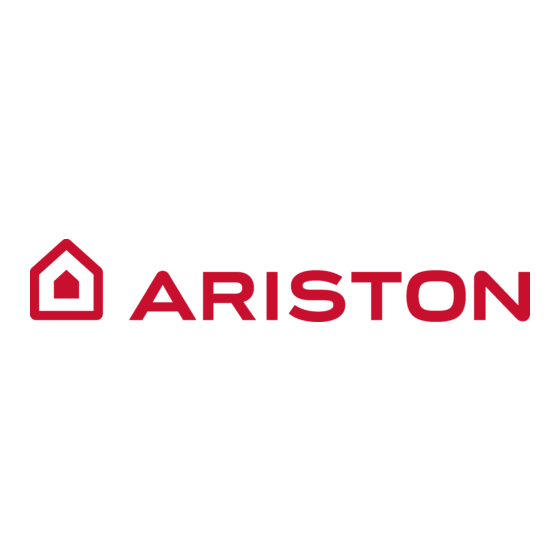Ariston Piccolo ARKS 50 Kurulum Kılavuzu için Talimatlar - Sayfa 9
Su Isıtıcı Ariston Piccolo ARKS 50 için çevrimiçi göz atın veya pdf Kurulum Kılavuzu için Talimatlar indirin. Ariston Piccolo ARKS 50 20 sayfaları.

GB
- Damp: do not install the appliance in closed (unventilated) and damp rooms.
- Frost: do not install the appliance in areas where the temperature may drop critically
and there may be a risk that ice may form.
- Sunlight: do not expose the appliance to direct sunrays, even in the presence of
windows.
- Dust/vapours/gas: do not install the appliance in the presence of particularly aggressive
atmospheres such as acidic vapours, dust or those saturated with gas.
- Electrical discharges: do not install the appliance directly on electrical supplies that
aren't protected against sudden voltage jumps.
See warning no. 26
!
See warning no. 9 - In the case of walls made of bricks or perforated blocks,
!
partition walls featuring limited static, or masonry different in some way from
those stated, you first need to carry out a preliminary static check of the supporting
system.
Install the appliance using the special bracket provided in the box, fastening it
using 2 screws/Rawlplugs measuring 6 mm in diameter.
See warning no. 10
!
Local norms could set forth restrictions regarding the installation in a bathroom
environment. Therefore keep to the minimum distances foreseen by the applicable
norms in force.
The appliance should be installed as close as possible to the point of use
to limit heat dispersion along the piping.
See warning no. 20
!
Plumbing connection
Before making the plumbing connection, you must arrange for the system to be
cleaned thoroughly to eliminate any residue or dirt that could compromise the
proper operation of the water heater.
Connect the water heater inlet and outlet to resistant pipes or pipefittings, as well as
to the operating pressure, the temperature of the hot water that could at times reach
well over 80°C. We advise against the use of materials that cannot withstand such high
temperatures.
We recommend you use dielectric joints for the electrical insulation of the appliance
from the water mains.
Connect the inlet pipe (marked with a blue rubber washer) and the outlet pipe (red
rubber washer) to the corresponding pipes of the system. Tighten couplings E using
a pair of spanners as illustrated in fig. 4
In the event of low mains pressure values, install the appliance at no more than one
metre above the tap (fig. 3) and no more than 2 metres form the side of the latter.
Should these distances be greater than the recommended values, you must include
an air valve on the hot water pipe.
Fill the appliance up and let the water flow out of the tap for a few seconds.
The water flow rate, with the tap turned on fully, should not be more than 5 l/min; for
this reason, in accordance with DIN 44531 norm, you should adjust the small valve
(fig. 5) to limit the water flow.
In the presence of particularly hard waters, there will be a considerable and rapid
formation of limescale inside the appliance, with a consequent loss in efficiency and
damage to the electric heating element.
Electrical connection
For greater safety, have qualified personnel carry out a careful inspection of the electrical
system, ensuring it complies with the applicable norms in force, because the appliance
manufacturer will not be held responsible for any damage caused by the lack of earthing
of the system or for faults in the electricity supply.
28
Supplied By www.heating spares.co Tel. 0161 620 6677
